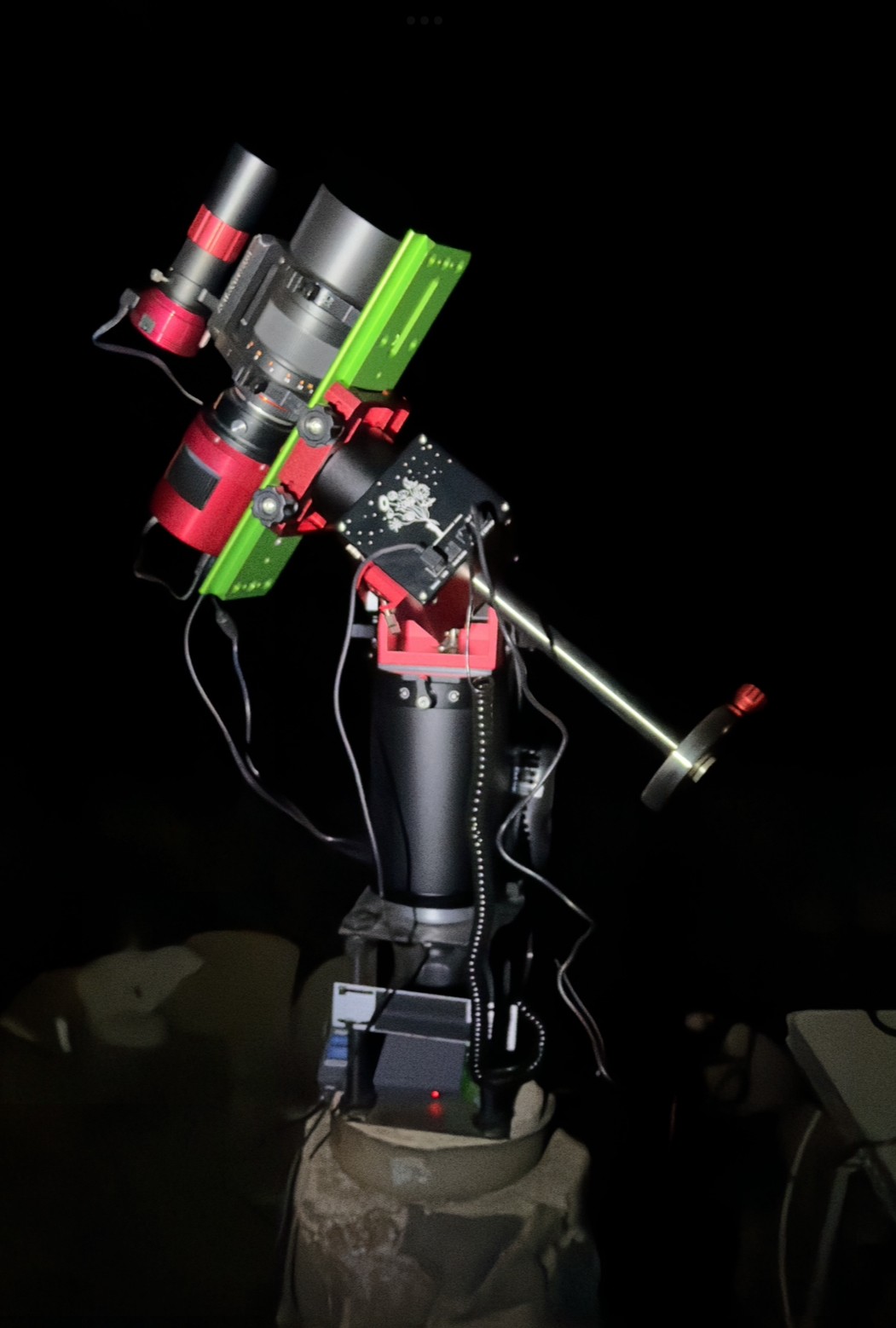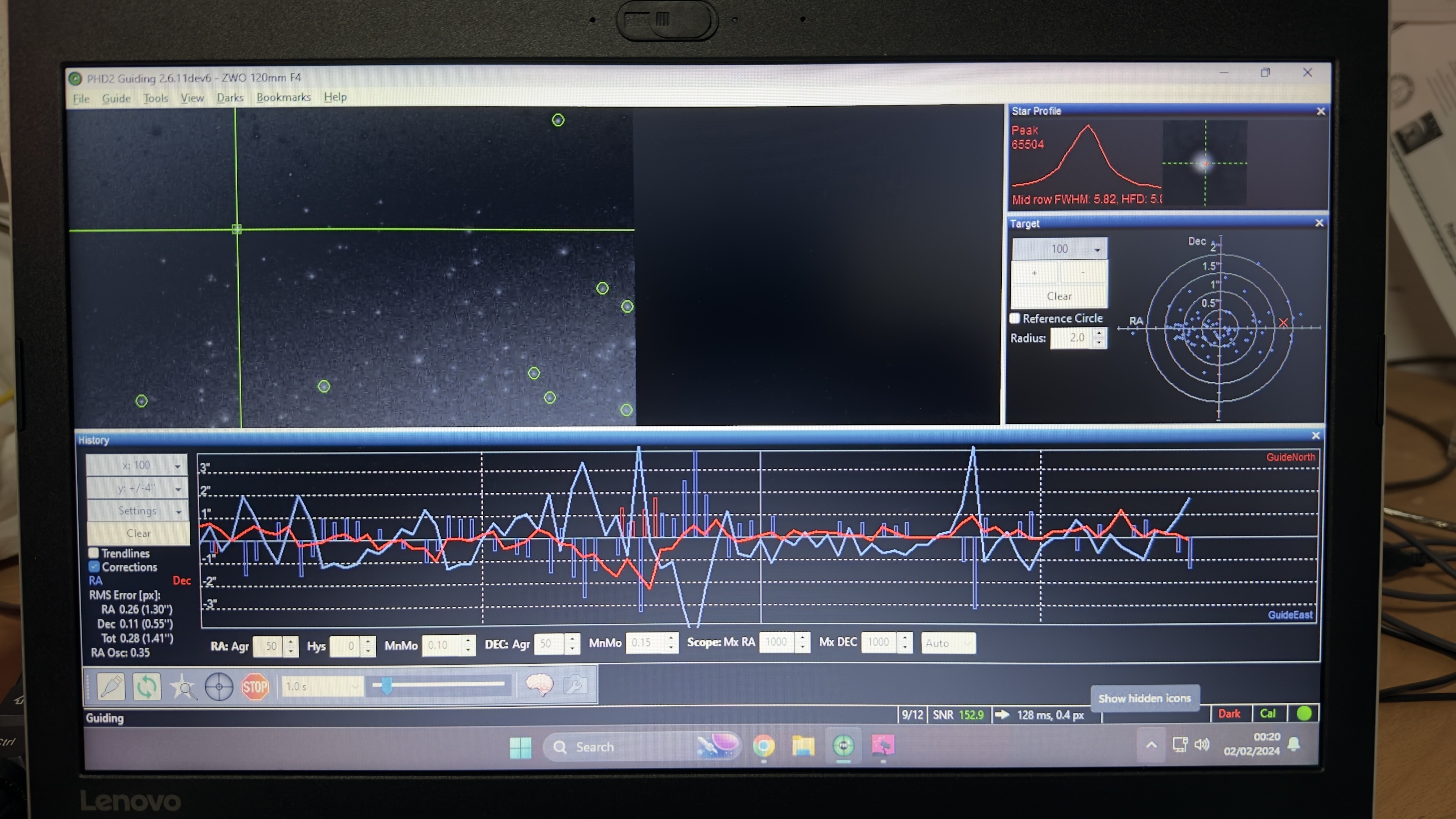Last night, after two months between cloudy weather and work commitments, I managed to finally setup the mount and give it a go.
I set it up on a Pier with PE200, and used a 2600MC coupled with 135mm Samyang @ F/2.8, guided with the 462MC on a ZWO F4 guidescope. The control is performed by a Mele Mini Pc with PHD2 for guiding and APT for main camera control.
Everything was polar aligned using the sharpcap routine.
For some reason it started the night really well, at around 0.32” total RMS, and even reaching 0.28”. This was with the main lens pointing almost vertically to the zenith because my target (Spaghetti Nebula) was close to the meridian already.
Then the mount stopped tracking because it reached the limits.
I performed a manual meridian flip, recalibrated PHD2 guiding and couldn’t seem to make it work anymore, it wasn’t able to go lower than 0.9” with peaks and moments reaching 1.6”.
I tried changing a bunch of setting but nothing helped.
I attach an image of the guiding, hoping someone is able to help me out here, because I have no idea, about what is wrong..
Thanks
The Setup

The PHD2 Guiding
